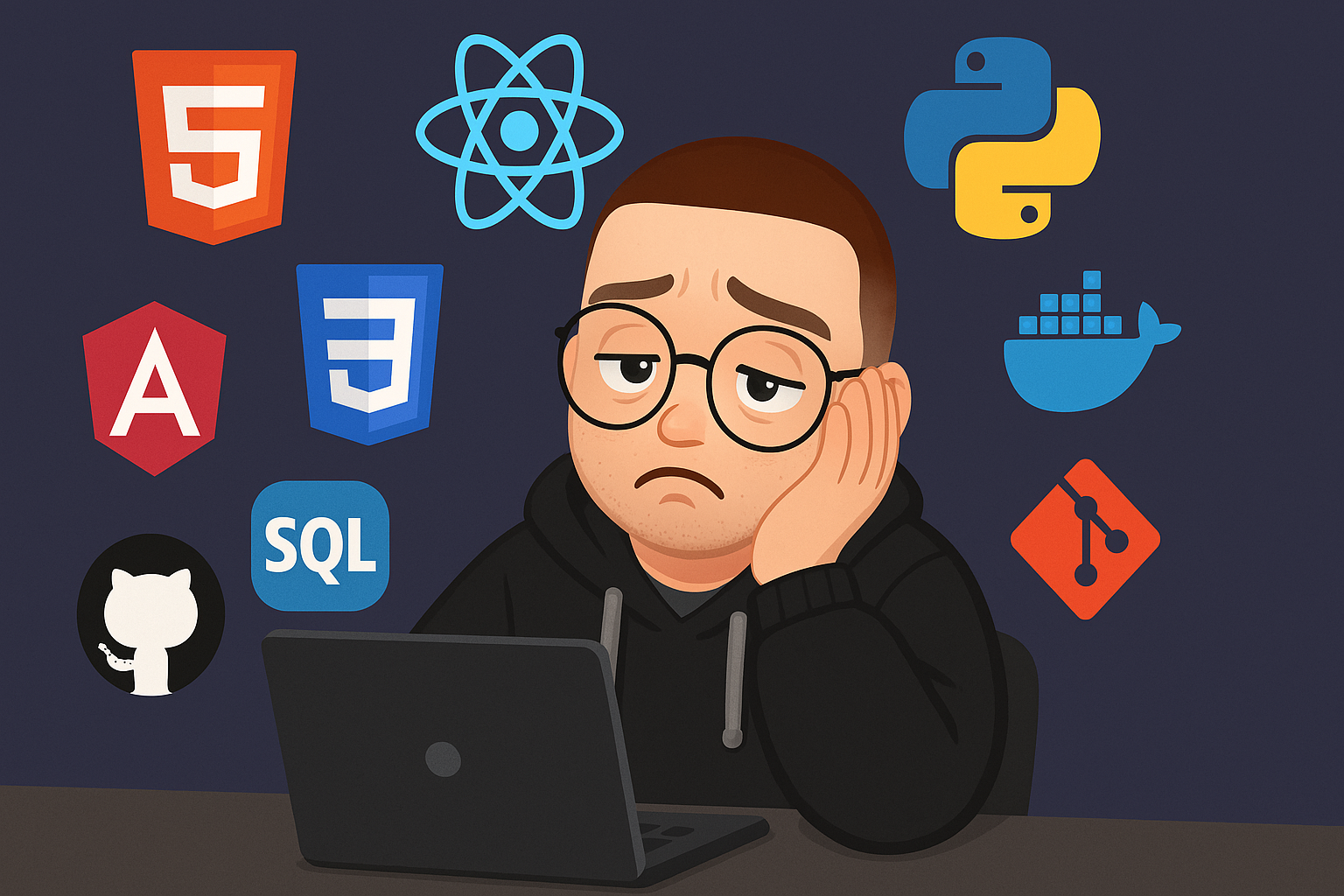Feeling overwhelmed by too many choices? Decision fatigue can impact your productivity, especially when choosing tools as a developer or designer. Check out these tips to simplify your decisions and stay focused.
What is decision fatigue?
Decision fatigue refers to the deterioration in the quality of our decisions after a long period of making them. For professionals like us, constantly faced with choices—from the trivial (dark or light mode?) to the crucial (React or Angular?)—it can creep up quickly. Symptoms include:
- ✅ Procrastination
- ✅ Impulsiveness
- ✅ Doubt about your choice
- ✅ Avoidance of important decisions
- ✅ Mental exhaustion
- ✅ Irritability or frustration over minor decisions
All of this can (and trust me, will) stall progress on your projects.
The problem with too many tools
Nowadays, developers and designers have access to an overwhelming number of tools. Here are some common dilemmas:
- Frontend frameworks: React, Angular, Vue, or newer contenders like Svelte, Solid, Qwik, etc.?
- Design tools: Figma, Sketch, Adobe XD, or an all-in-one solution like Canva or Adobe Creative Cloud?
- Productivity apps: Stick with Trello or switch to Notion for its flexibility? Todoist, Asana, ClickUp, etc.?
While variety is good, it can also lead to doubt and overthinking our choices.
Tips to simplify your decision-making process
1. Clearly define your needs
Start by identifying the essential requirements for your project. For example:
- Do you need scalability or speed?
- Will the tool integrate well with your current workflow?
- What kind of documentation is available?
- What kind of community backs it?
- Is it open source?
- Does it have a license that fits your needs?
💡Writing down your priorities can help eliminate many options right from the start.
2. Limit your research time
Set a time limit for evaluating tools—whether it’s an hour or a day. Block that time in your calendar to research without distractions, but avoid getting lost in endless information. Over-researching often leads to analysis paralysis. It’s usually that overthinking that keeps us from executing. Instead of moving forward, we get stuck comparing every tiny detail in an endless loop. Use trusted reviews, forums, or ask colleagues to save time and make an informed choice without getting stuck.
3. Start small: test before committing
Instead of going all-in on a new tool, test it in a small project or prototype. Many tools offer free trials or community editions that let you evaluate whether they fit your needs without major commitments.
4. Standardize whenever possible
Sometimes the best decision is to stick with what already works. Establishing a standard toolset for your projects can save time and mental energy. For example, if your team already thrives with Figma and React, why reinvent the wheel?
5. Delegate or collaborate on decisions
If you work in a team, lean on others to leverage their experience. Delegate decisions to those more familiar with certain tools to reduce the burden. Often, teammates have already dealt with these choices—their experience is invaluable.
📌 Real-life example: choosing the best drag and drop library
Once, I had to implement a drag and drop feature in a Kanban-style interface. As usual, the first hurdle was the overwhelming number of available options. Instead of getting lost comparing endless alternatives, I followed the same tips I’m sharing in this article:
- I clearly defined my needs: I wanted something performant, with virtualization support and solid documentation.
- I limited my research time: I focused on a few popular options, quickly discarding outdated or poorly maintained ones—or those that didn’t meet my criteria.
- I tested before committing: I built basic prototypes with different libraries to see which one integrated best with my workflow.
After this process, I chose @hello-pangea/dnd, a modern fork of react-beautiful-dnd—the same library used by JIRA, but now deprecated. This fork is actively maintained, has virtualization support, and comes with multiple examples that made it very easy to get started. Among them were exactly the examples I needed: virtualization.
The result? I avoided analysis paralysis, made a confident decision, and focused on building the user experience I wanted—without getting stuck in tool selection or running into problems later, because from the very start I knew the library offered everything I needed.
🔥 Beat the paralysis and start building
Decision fatigue is a common challenge for developers and designers, but it doesn’t have to affect your productivity.
By defining your needs, setting limits, and strategically testing tools, you can simplify your decision-making process and focus on what truly matters: building impactful projects.
💡 I’d love to hear from you! 💬
Do you have your own strategies for simplifying tool choices? Share them in the comments, and don’t forget to send this article to other developers and designers who might feel overwhelmed. Let’s work smarter together! 🚀
Let me know if you’d like this adapted as a blog post or formatted for a different platform (like Notion or Medium).
